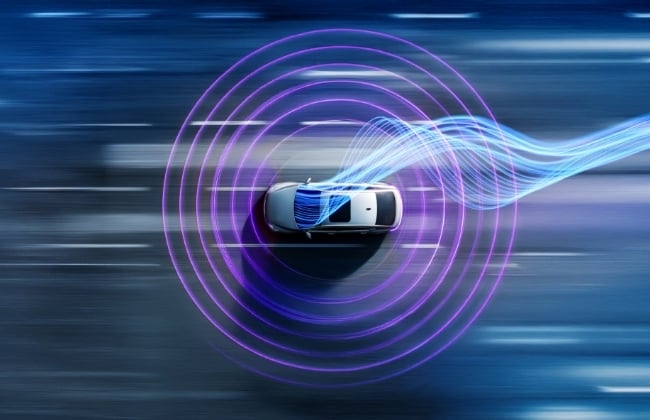- 30 November 2022
- Ted Hazell
Self-driving cars come in many forms. Whether it's a shuttle-bus system that follows a strict route day in and day out, or a car that will reverse park perfectly as you sit back and relax, autonomous vehicles (as they are commonly known) are already here. And there are many companies who are working tirelessly to ensure fully autonomous driving becomes the norm for everyone.
While many vehicles have autonomous features such as emergency braking and adaptive cruise control, it is very rare to see a fully autonomous, self-driving vehicle on the road. The UK is looking to rollout self-driving vehicles by 2025. In the U.S., while no states have any specific laws that ban self-driving cars, autonomous vehicles are still limited to test vehicles from the likes of Waymo and Cruise. In American, Tesla is hoping for regulatory approval of its Full Self-Driving Beta at some point in 2023.
While there are going to be extended delays, given the rate of technological and engineering development, fully self-driving cars are inevitable.
Why make cars self-driving?
What was once a science fiction trope is fast becoming a reality. Within the six levels of autonomous driving, all types and levels of automation are built around improving one key area: safety.
Driver behaviour or error is the cause of close to 90% of all car accidents and crashes. By increasing the level of autonomy in vehicles, that percentage can be significantly reduced. With safer roads comes a bonus effect that benefits other areas of driving. With fewer crashes will bring reduced traffic hold-ups and lower repair costs, making a self-driving future a more cost-efficient one. This too will help save on fuel and reduce emissions, which again has a knock-on effect on helping the environment.
With full self-driving future, driver supervision is not required which means greater freedom for those who are currently unable to travel without relying on another person. This is especially true for disabled users. In 2012, Google (now Waymo) gave Steve Mahan, a legally blind man, the opportunity to test out its self-driving car. The car did all the work using its sensors to safely position itself on the road and make autonomous decisions on when to turn, brake and exit junctions. This 'test ride' took Steve to get some food from a drive-through and took him to pick up his dry-cleaning.
Steve commented on his experience by saying, "This is a hope of independence. These cars will change the life prospects of people such as myself."
In this blog post, we will look at the most exciting self-driving companies and the ones that are making advances in self-driving technology. Who better to start with than the most commercially well-known business striving for fully autonomous success?
Tesla
Founded by Elon Musk in 2003, Tesla is one of the most popular electric vehicle makers and is the first to offer what it claims is a fully operational self-driving car.
Its autonomous driving tech is named Autopilot, an advanced driver-assistance system (ADAS) that boasts many self-driving features. When Autopilot was first introduced in 2013, Elon Musk said, "Autopilot is a good thing to have in planes, so we should have it in cars."
The current system includes features such as a traffic-aware cruise control, autosteer, self-parking, auto lane change, and even auto park and summoning – where you can call the car to come to you, even in a parking lot.
Whilst this does sound like the car of the future, Tesla actively encourages users to ensure that they pay attention even when Autopilot is in action. Before enabling Autopilot, you must agree to “always keep your hands on the steering wheel”. If the car believes that this is not being done, a series of visual and audio warnings will be delivered, and eventually the Autopilot feature is made unavailable for the remainder of the journey.
In American, Tesla is offering is Full Self-Driving Beta to anyone that wishes to pay for it, and while it can be used it does not yet have regulatory approval. As it says on Tesla’s website, “Autopilot, Enhanced Autopilot and Full Self-Driving Capability are intended for use with a fully attentive driver, who has their hands on the wheel and is prepared to take over at any moment. While these features are designed to become more capable over time, the currently enabled features do not make the vehicle autonomous”.
However, Tesla is pushing at the boundaries of technology and regulatory frameworks and is confident of achieving its goal sooner rather than later.
Cruise
Cruise is a self-driving car company based in California. Founded in 2013, it is an autonomous subsidiary of General Motors (GM) and is at the core of its self-driving efforts. Since its founding, Cruise has made advancements in self-driving and has had many investors, including Microsoft and Honda. During this time, it has also received a driverless deployment permit in California – meaning that it is able to provide a public taxi service with its driverless vehicles.
Cruise is currently expanding its fleet of self-driving vehicles with the goal of making driving smoother, more accessible and safer.
To achieve this, Cruise uses a data visualisation tool in their vehicles, called Webviz, that uses a code-heavy algorithm to predict the movements of pedestrians, other vehicles, and indeed anything within the vehicle's surrounding area. Webviz then uses this data to instantly decide what actions the car should take. This is an ever-developing tool that will only get better the more it is used. What started as a tool for autonomous vehicles has only expanded due to Webviz’s potential. Since its launch, Webviz has become open source and can now be used in many other industries, most notably robotics.
Li Auto
Li Auto is an electric vehicle manufacturer based in China. The company, created and owned by – and sometimes known as – Li Xiang, uses range extenders as a power supply for its electric vehicles. This means longer distances can be covered, reducing the need to stop and charge your vehicle.
Its focus is to “create safer, more comfortable, and more convenient products and services for families”. To accomplish this goal, all its vehicles are fitted with “Smart Spaces”, three-dimensional, spatial interactive experiences which includes a 4D immersive audio and video system and a five-screen interactive window mode. This means that no matter where you are sat in its vehicle, you can have an immersive audio-visual experience. This, coupled with several ADAS features, makes for a futuristic driving experience.
Alongside “Smart Spaces”, Li Auto promotes intelligent driving in its vehicles. By using Ideal L9, equipped with lidar, its vehicles include high-performance cameras and an intelligent driving platform that improves the safety of these vehicles on the road, something it is actively working to improve.
Telechips
Telechips is a Korean business that specialises in SoC products founded in 1999 for both autonomous vehicles and ADAS systems. It has become a very successful business within its sector and boasts several offices around the globe, including Japan, China, the USA, Germany and Singapore.
Whilst its products have been used for set-top boxes and media players, it has focused its efforts on automotive semiconductors to enhance infotainment and ‘cockpit’ for future vehicles; its chips are most notably used for intelligent automotive solutions. These products are flexible and support a wide array of operating systems, including Android, Linux, and Windows.
Texas Instruments
The oldest company on the list, founded in 1930, Texas Instruments –commonly known as TI, designs, manufactures, tests, and sells both analogue and embedded semiconductors. These semiconductors are used across all markets, including industrial, personal electronics, communications, enterprise systems, and, most importantly for this post, automotive.
TI’s primary goal is to create a better world by providing more affordable electronics through semiconductors and helping improve applications and markets with its products. This makes it one of the top ten semiconductor companies in the world based on sales volume and it enjoys one of the largest market shares in the analogue semiconductor industry.
Tis automotive sector is working hard to improve ADAS systems, infotainment systems, electronics, lighting, and any other challenges that they are faced with. Its ADAS system solutions are focused on safety and driving autonomy forward, utilising lidar, radar, ultrasound, automotive 360-degree cameras and intelligent sensing. TI aims to succeed and deliver innovation fast, and “prepare for the road ahead”.
Renesas
Renesas Electronics is a Japanese analogue, power, and embedded semiconductor manufacturer that was born in 2002 out of the merging of Mitsubishi Electronics, Hitachi, and NEC. Its operations begin with research and development and handles the entire process up to the sale and service of its semiconductor products.
Renesas’ key message is simple – “To make our lives easier”. It aims to do this by establishing itself as the leading progressive and modern semiconductor company in the world. Its products cover all areas of future vehicles, from ADAS and autonomy, to safety, information, and electric driving. Its R-Car SoCs are the foundation of many infotainment and ADAS solutions and for many years have featured Imagination’s PowerVR-architecture-based GPUs.
XPeng
Founded in 2014, XPeng is a vehicle manufacturer based in Guangdong, China, with offices located in California and many areas of Asia and Europe. It aims to explore the full potential of mobility – from electric road vehicles to flying vehicles. Its core belief is simple: that technology is set to transform the future of mobility. XPeng wants to position itself as the leader of smart mobility by using integrated internet and AI technology in its vehicles.
Via its Xmart OS, which is its in-car intelligent operating system, XPeng promotes itself as the world-leading company in smart-driving assistance architecture, ADAS, and autonomous advancements. Its operating system advancements include a meditation mode, remote-control parking, adaptive cruise control, lane-change assistance, valet-parking assistance, and even a high-temperature antibacterial function that was rolled out during the pandemic and remains included to this day. With each OS update, XPeng is building a system that takes us one step closer to a fully autonomous experience.
Waymo
What started as Google’s self-driving project has developed into its own subsidiary of Alphabet Inc., Google’s parent company. It’s important to highlight that Waymo doesn’t manufacture vehicles, but it is a tech start-up with significant AI and machine learning resources and expertise. It is this that has led Waymo to become a close partner with manufacturers such as Jaguar and Chrysler, who provide the manufacturing piece of the puzzle.
Waymo claims that compared to all the other major self-driving initiatives it has travelled more miles and had far fewer accidents overall, impressive considering that it operates a ride-sharing service in Arizona. Waymo is also one of the few companies that encourages its back-up drivers to take their hands off the wheel or even sit in the back seat and let the “Waymo driver” to do everything.
The Waymo Driver uses complex data gathered from its sensors to decipher what is around it through machine learning – identifying cyclists, pedestrians, other vehicles, and even road construction. It also responds to all traffic signals and signs. Using this information helps the Waymo driver predict things instantly, allowing for fast reactions and an ultimately a safer driving experience. Waymo also has other autonomous driving projects such as its “Waymo Via” a self-driving truck-delivery service.
The future is autonomy
With all this happening it’s not unreasonable to expect to see the majority of all mobility being taken up by autonomous vehicles by the year 2030. With this increase, we will all enjoy the benefits of reduced congestion, a cleaner environment, and most importantly, safer transport.
The companies mentioned, plus others, are working hard to turn self-driving vehicles from more a novelty or a luxury into a realistic option for all and a necessity for our roads.
By leveraging the power of artificial intelligence, machine learning, and automation, what we see from these companies will hopefully soon be a reality.





